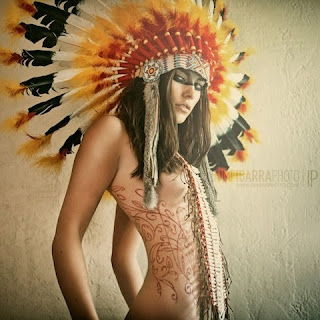Tattoo art has gained immense popularity over the last decade. With this rise in the number of tattooed people, also comes a rise in the number of cases of tattoo regret. Right now there are over 45 million Americans with at least 1 tattoo. Studies and polls have shown that between 17%-50% of those asked experience some tattoo regret. Luckily for them, it's never been easier, safer, or more affordable to effectively remove an unwanted tattoo. Primarily, this can be attributed to advances in laser technology.
Laser tattoo removal is a rapidly growing industry. However, the concept (and procedure) is still new to many people. What follows is an overview of some of the most common frequently asked questions (FAQs) about laser tattoo removal:
1. How does the laser procedure remove the tattoo?
A: Basically, the laser focuses an intense beam of light (laser) energy on the tattoo, which breaks up the tattoo ink pigment into tiny fragments. These fragments are then absorbed and flushed out naturally by the body over the next several weeks following treatment. Current laser technology allows providers to target the ink without harming the surrounding skin and tissue cells - so healing is quick and scarring is extremely rare.
2. Is the procedure painful?
A: Many people compare the pain associated with removal as being similar to the level of pain of getting the tattoo in the first place. However, it's a different type of pain. The impact of the laser pulse is often compared to the feeling of snapping a rubber band on the skin. The good thing is that it takes significantly less time to remove a tattoo than it did to apply it! Many providers also offer some type of service to help with the pain of the procedure - most commonly topical numbing agents (such as lidocaine) or cooling agents (e.g. ice pack or a cryo-cooler).
3. How many treatment sessions does it take to remove a tattoo?
A: This depends on a persons skin as well as the tattoo itself (the age of the tattoo, the density of the ink, the type and amount of ink used, color of the ink, the depth of the ink in the skin, the location of the tattoo, and how the tattoo was applied). Most professionally applied tattoos take from 5 to 12 treatments to remove completely. Homemade tattoos usually take less (1 to 6 treatments). If you just want your tattoo lightened to cover-up with new tattoo art, then it will take significantly less treatments (1 to 4 usually).
4. How long do you have to wait in between treatments?
A: Treatments are typically spaced 4-6 weeks apart. Your body needs time to heal properly and flush the ink out.
5. Can a tattoo be completely removed?
A: In many cases, yes. However, 100% removal cannot be promised. Different types of ink respond differently to the laser procedure. Black and red inks are usually the easiest to remove. Some light blues and light greens are tougher to remove. Also, it's hard to tell what additives are contained in any given ink by any given manufacturer, so not all inks respond the same.
6. Will there be any scarring?
A: As long as your provider is using an FDA approved laser for tattoo removal, there is very little chance of any scarring. Today there are numerous lasers (the most common types are q-Switched Nd:YAG or ruby) that are developed and manufactured specifically for tattoo removal. These lasers typically don't penetrate deep enough into the skin to cause scarring. Also, the pulse from these lasers only affects the tattoo ink pigments, not the surrounding cells and tissue. Most scarring risk comes from improper aftercare on part of the patient during the healing process after a procedure. However, people with a history of keloid scarring can be at greater risk for scarring, and should discuss this with their provider before any laser treatment.
7. What side effects are common?
A: Most removal side-effects are similar to when the tattoo was applied. Patients commonly experience some swelling, redness after a treatment. Some can also experience blistering of the skin. These effects are temporary and your skin will heal completely.
8. Who is qualified to perform this procedure?
A: State regulations vary. However, you want to at least be sure that your provider is a Certified Laser Specialist or Laser Safety Officer, who preferably has received advanced tattoo removal training. You also want to be sure that your provider is using a laser that has been FDA approved for tattoo removal. Be wary of any provider using a "multi-use" laser as different laser procedures (hair removal, laser lipo, tattoo removal, etc) all have different types of recommended lasers or laser wavelengths. There is no one machine that can effectively and safely perform all these different procedures.






















































